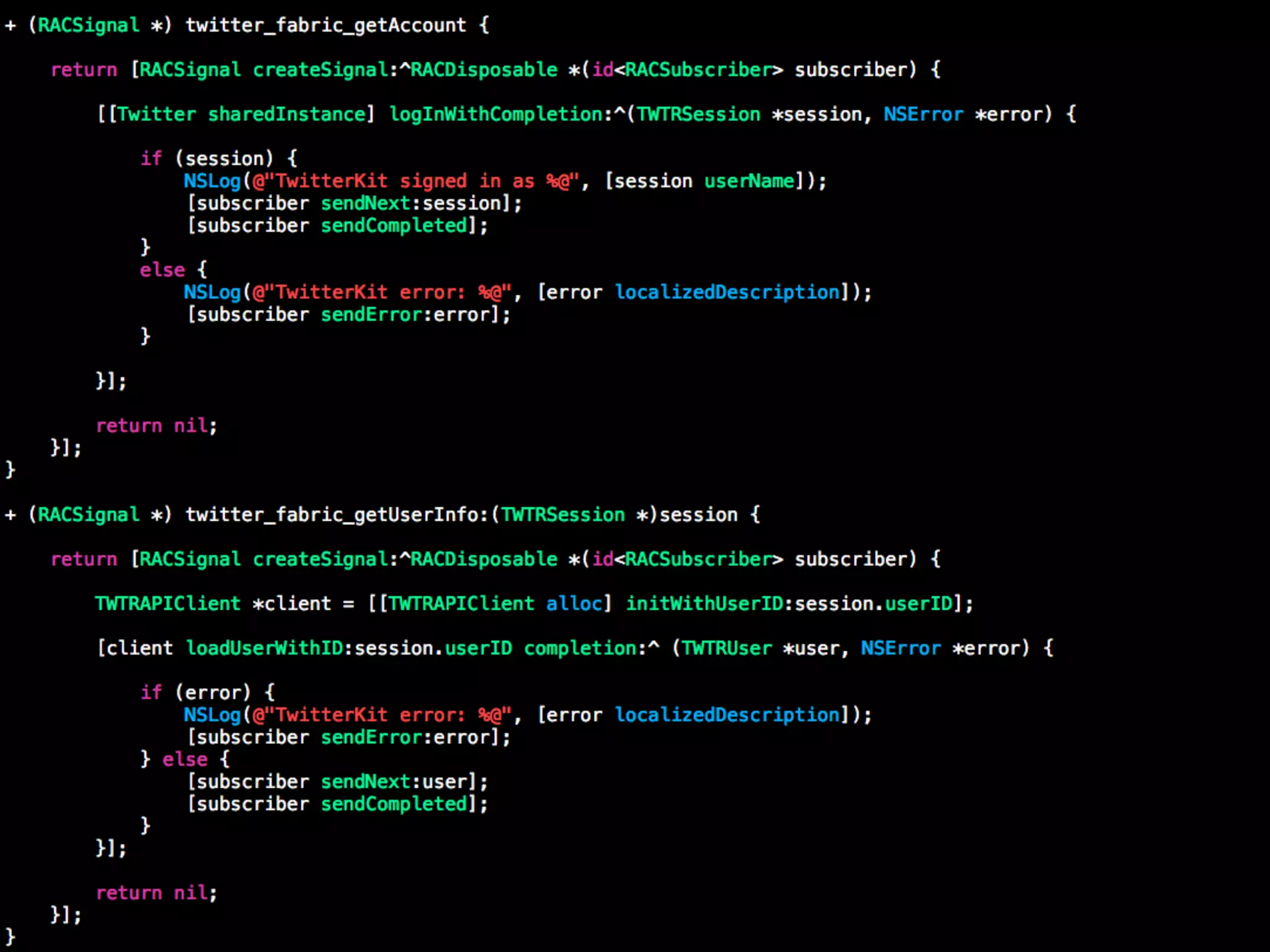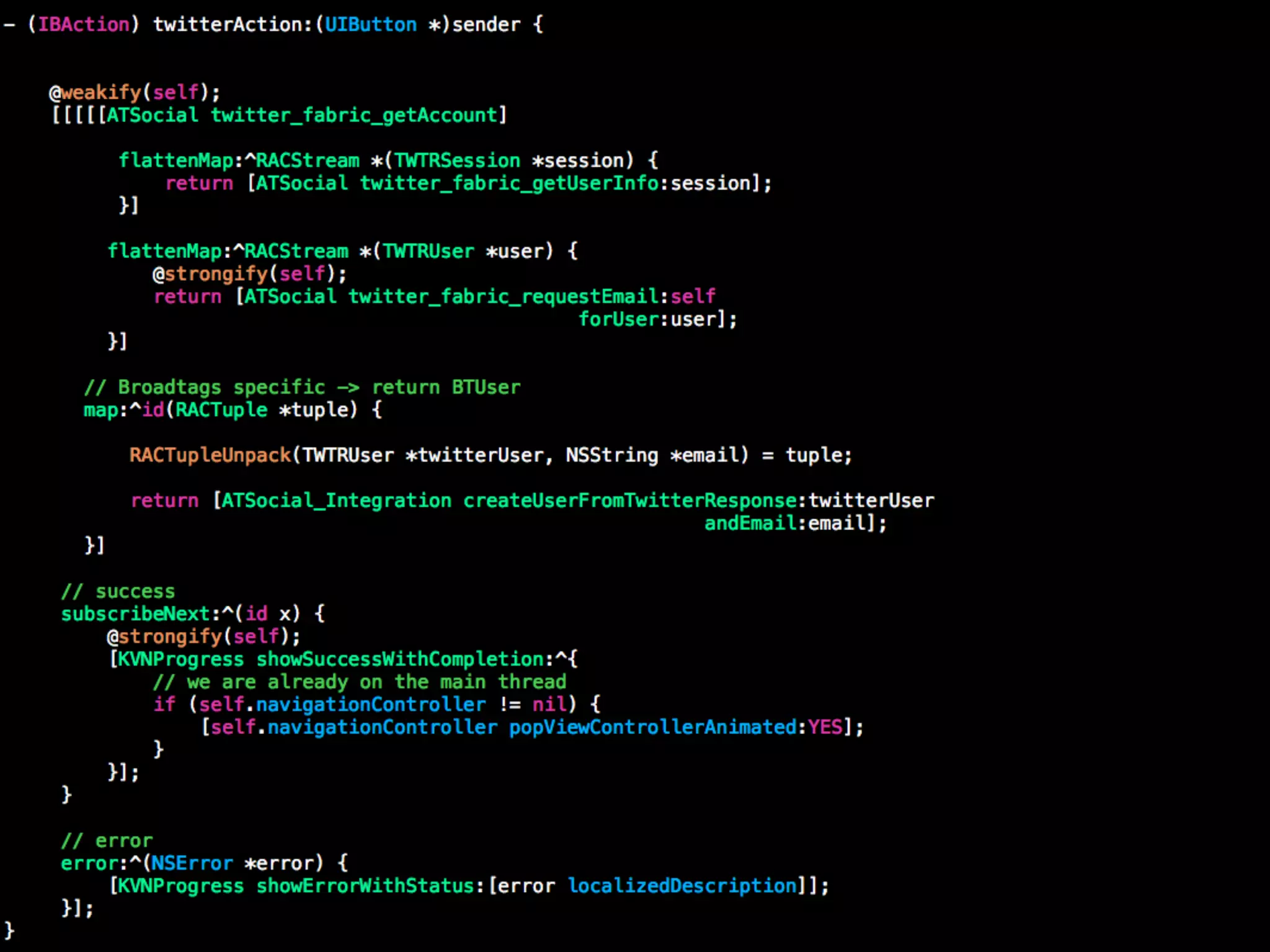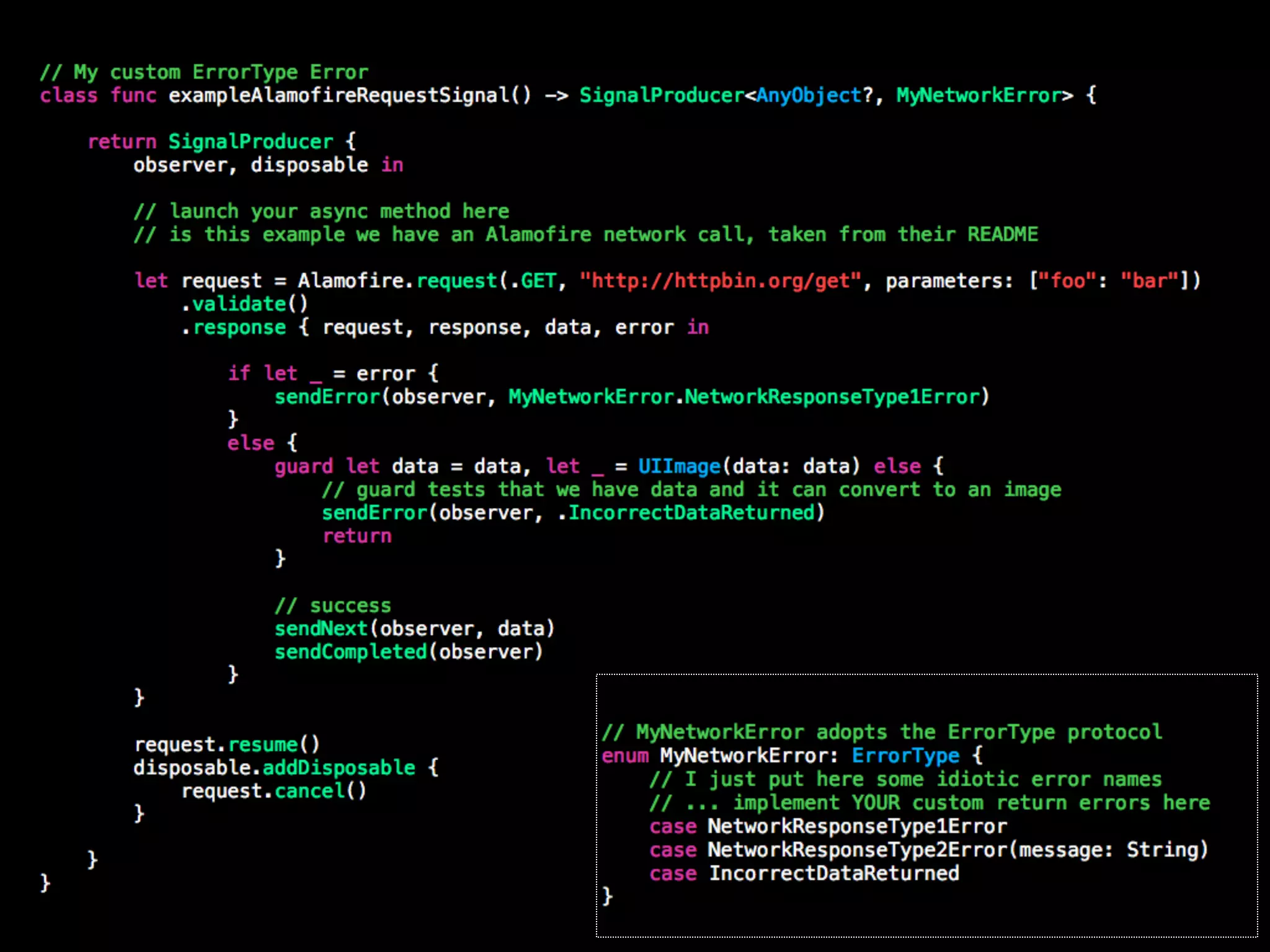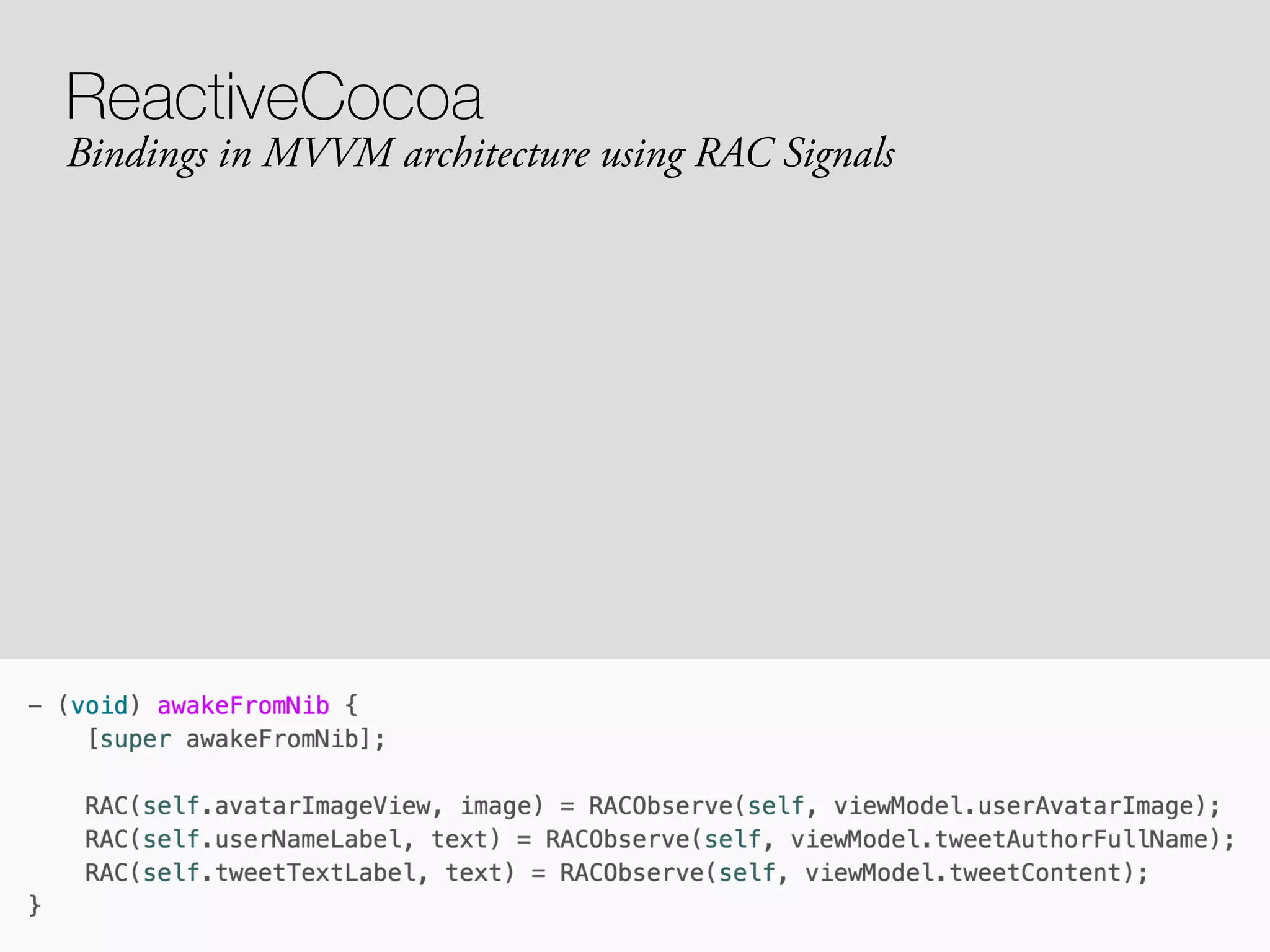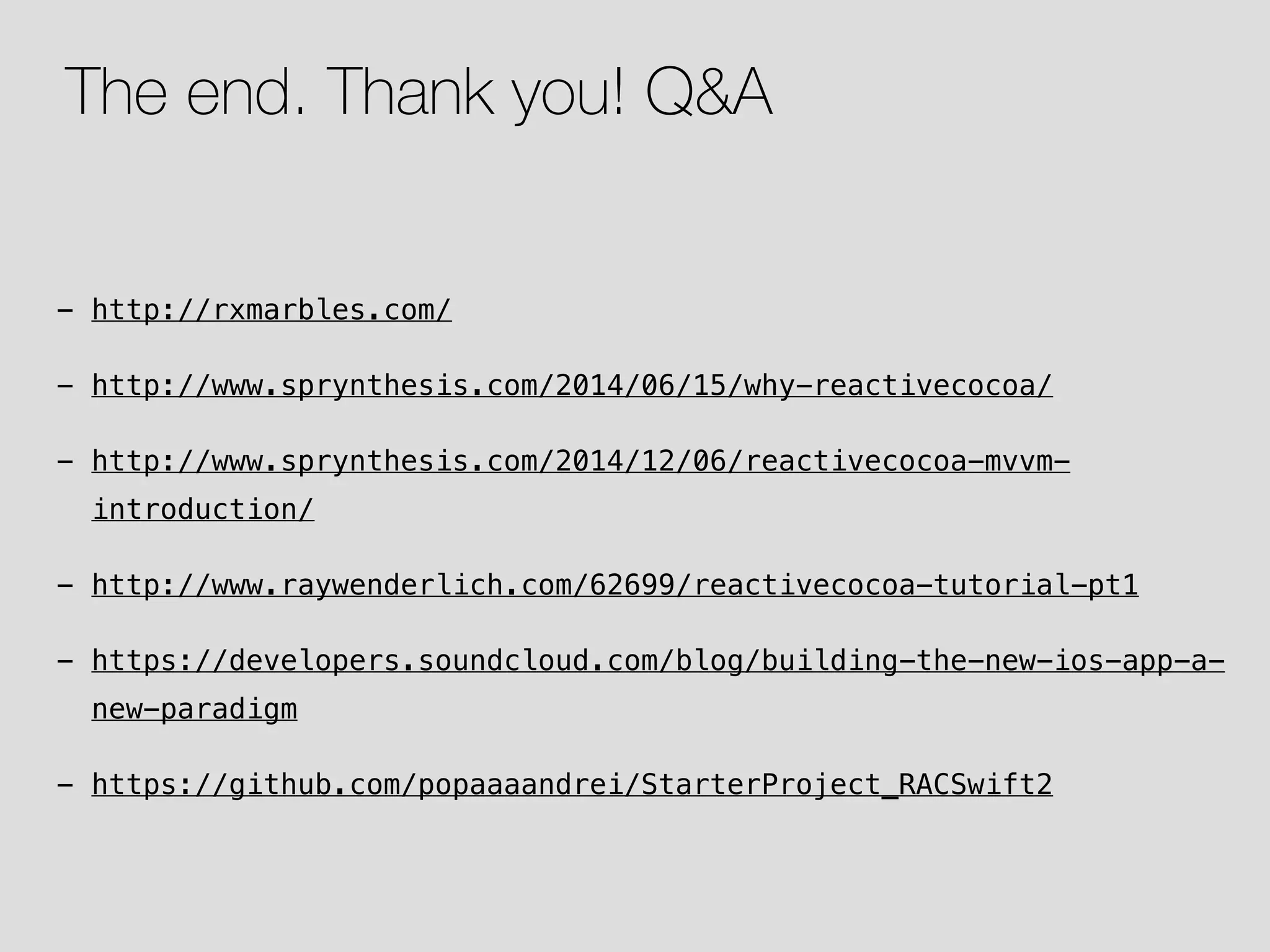The document discusses the challenges in programming, particularly with managing state and handling asynchronous tasks, and introduces functional reactive programming (FRP) as a solution. It highlights ReactiveCocoa as a mature implementation for iOS, allowing for easier management of asynchronous events through time-varying values and signals. The document includes examples of using FRP for tasks like processing images and generating animated GIFs, emphasizing its advantages in dealing with complexity and non-determinism in applications.
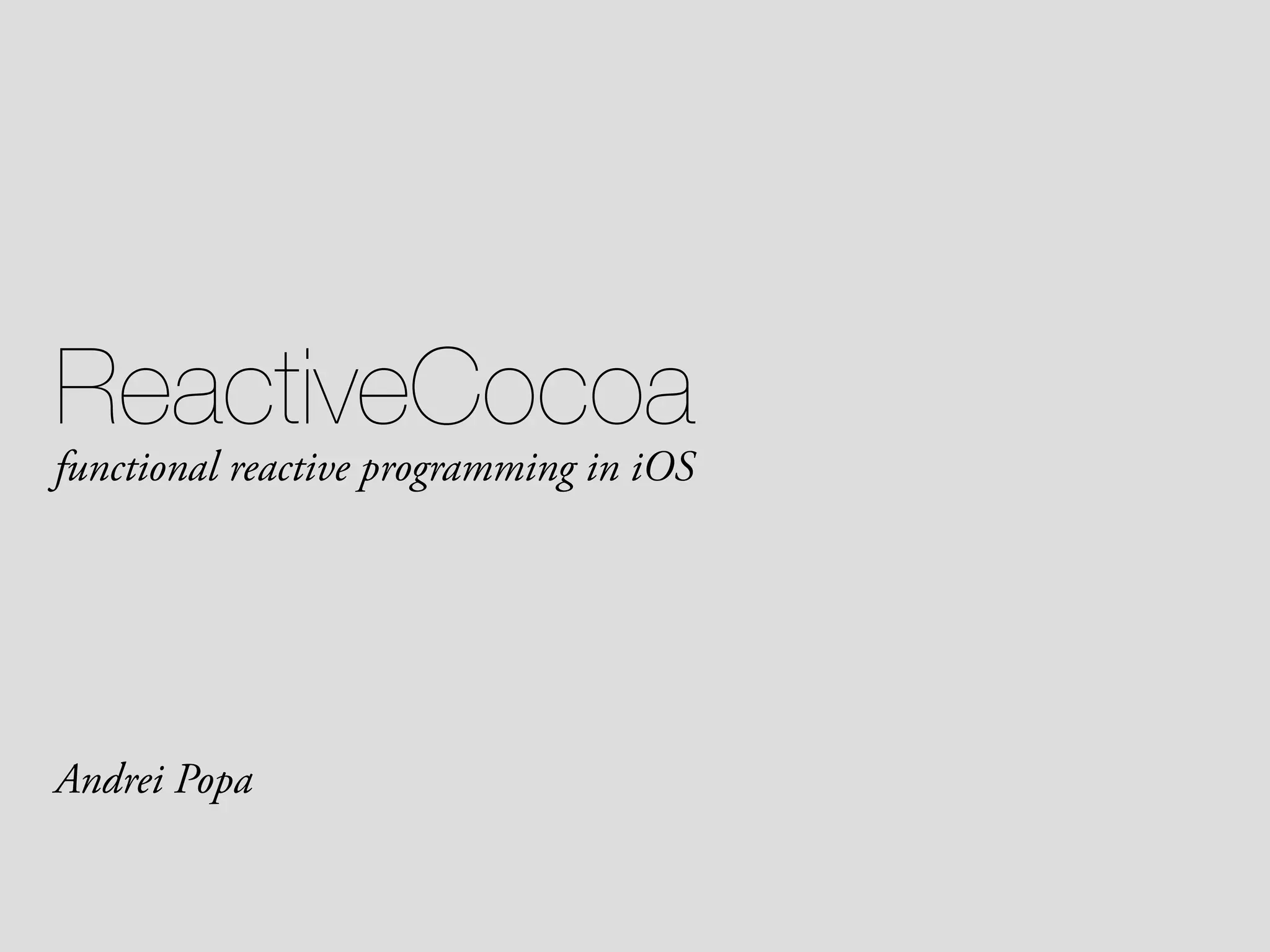
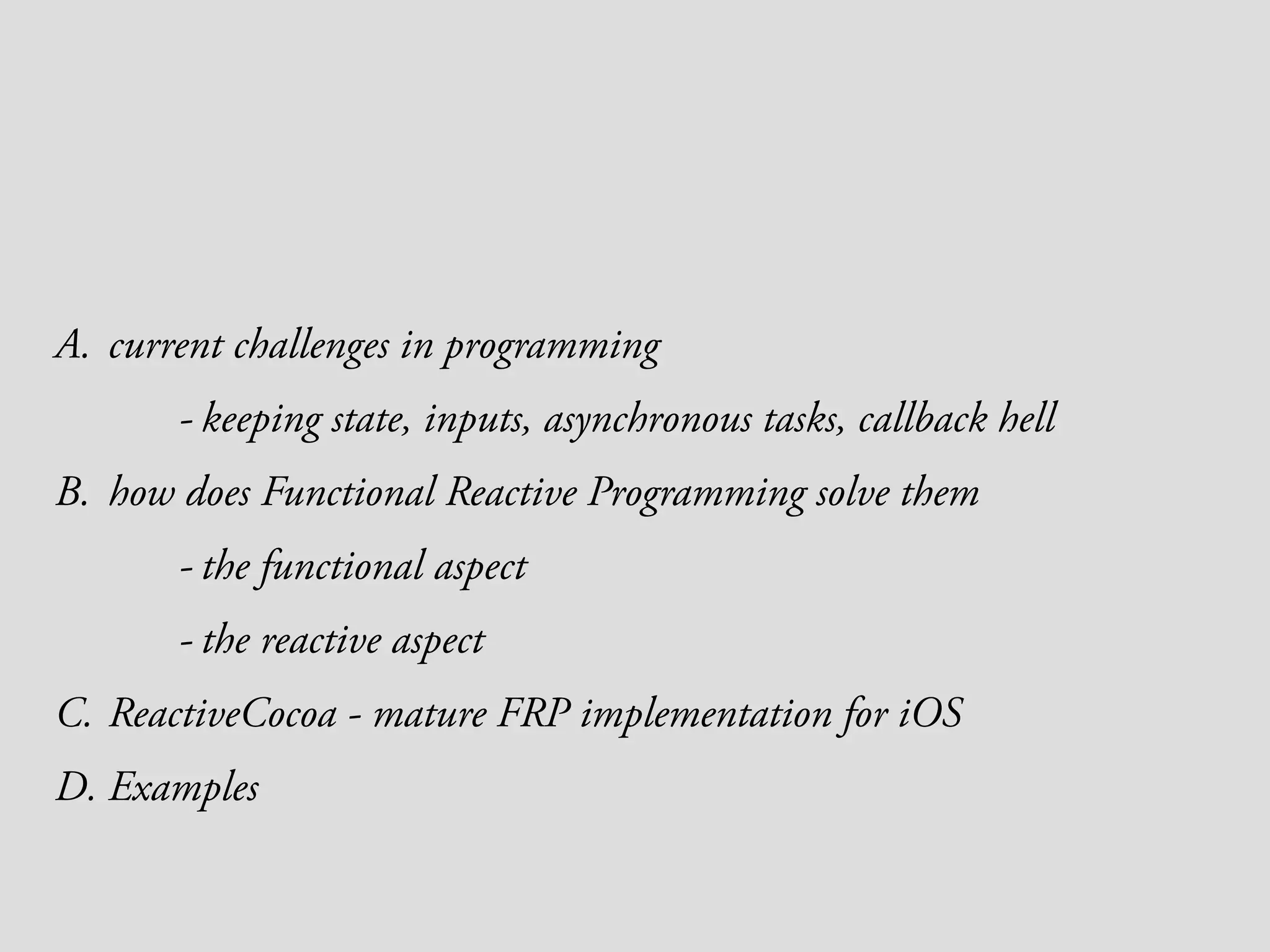
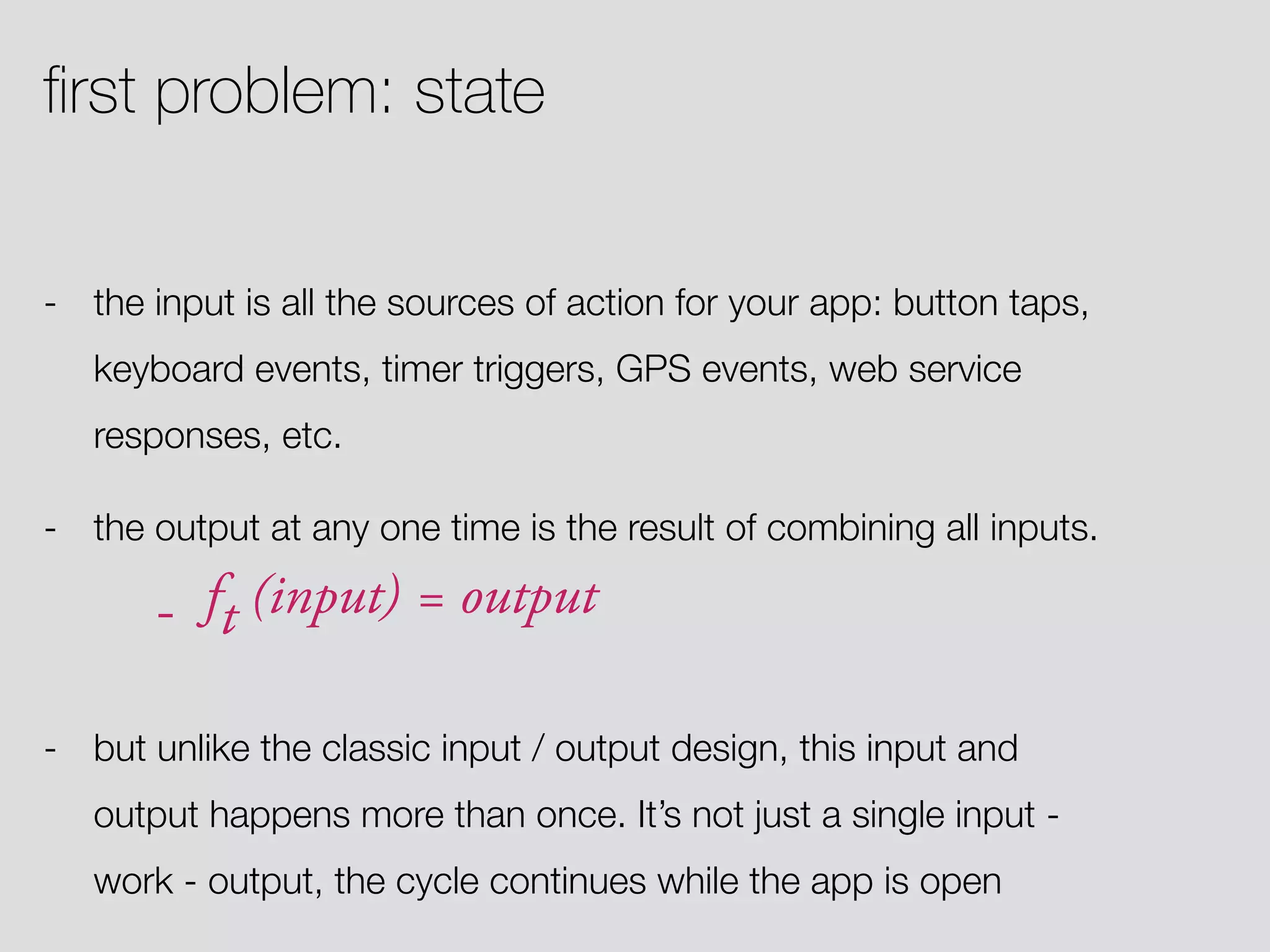
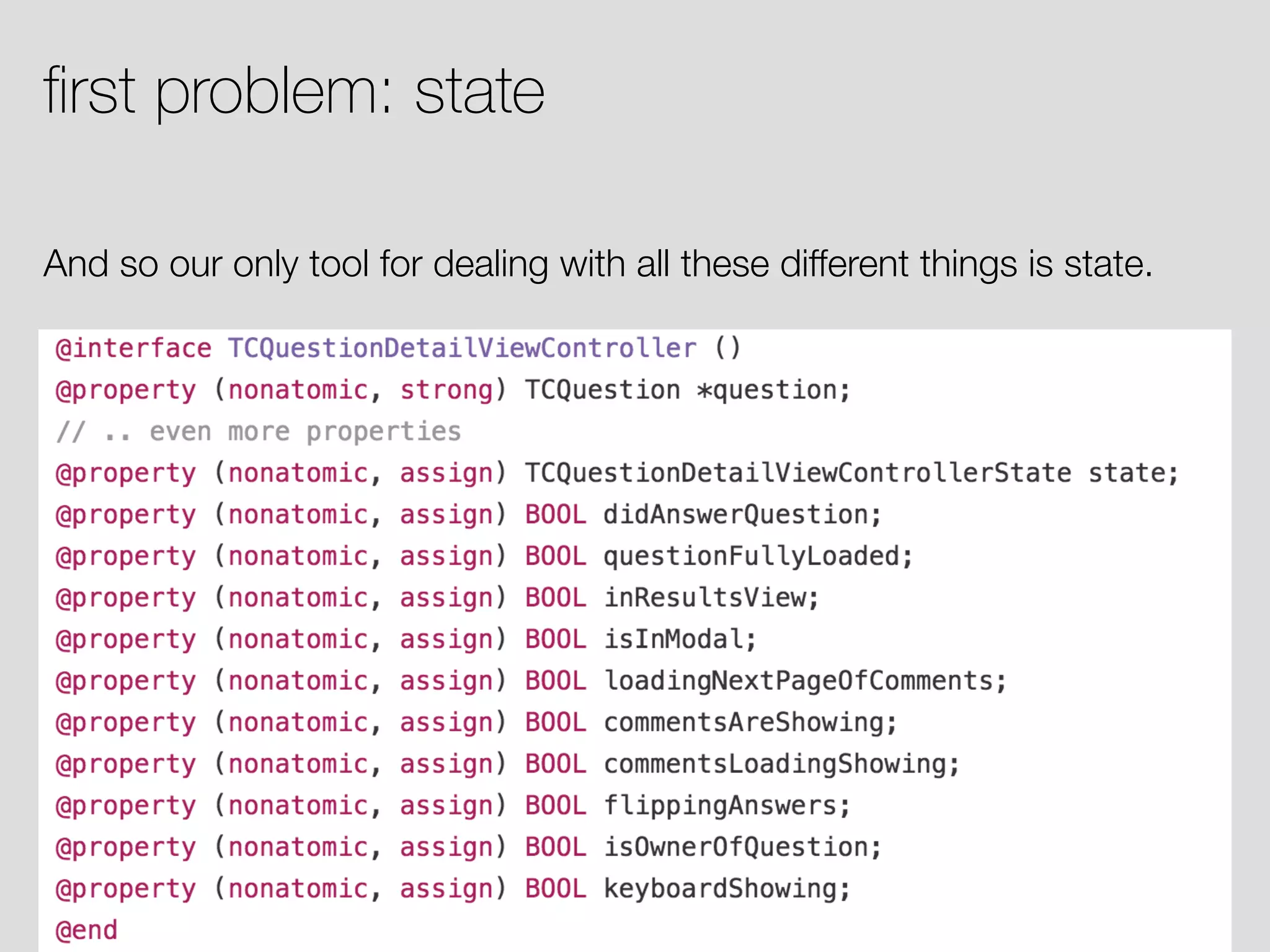
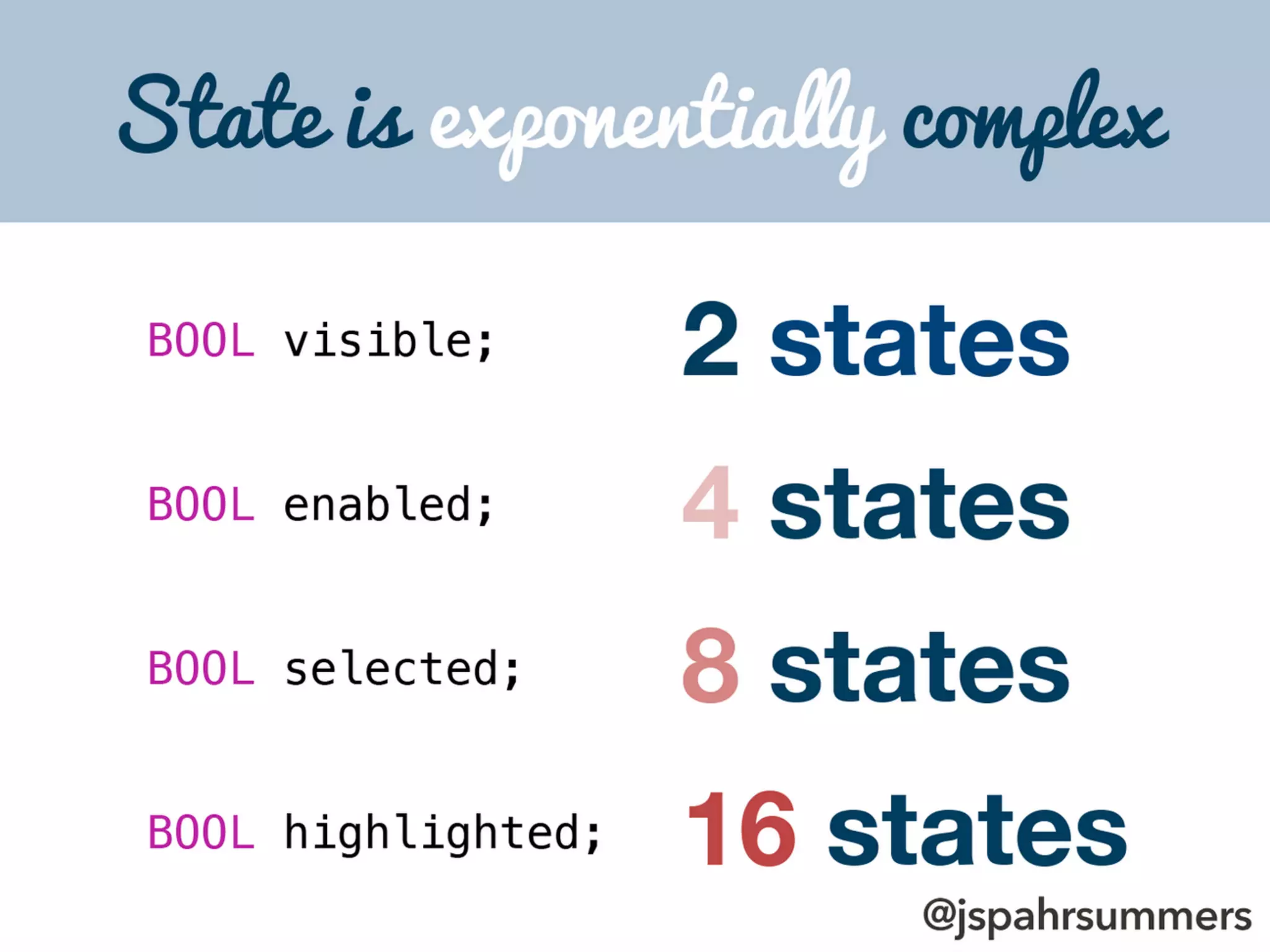
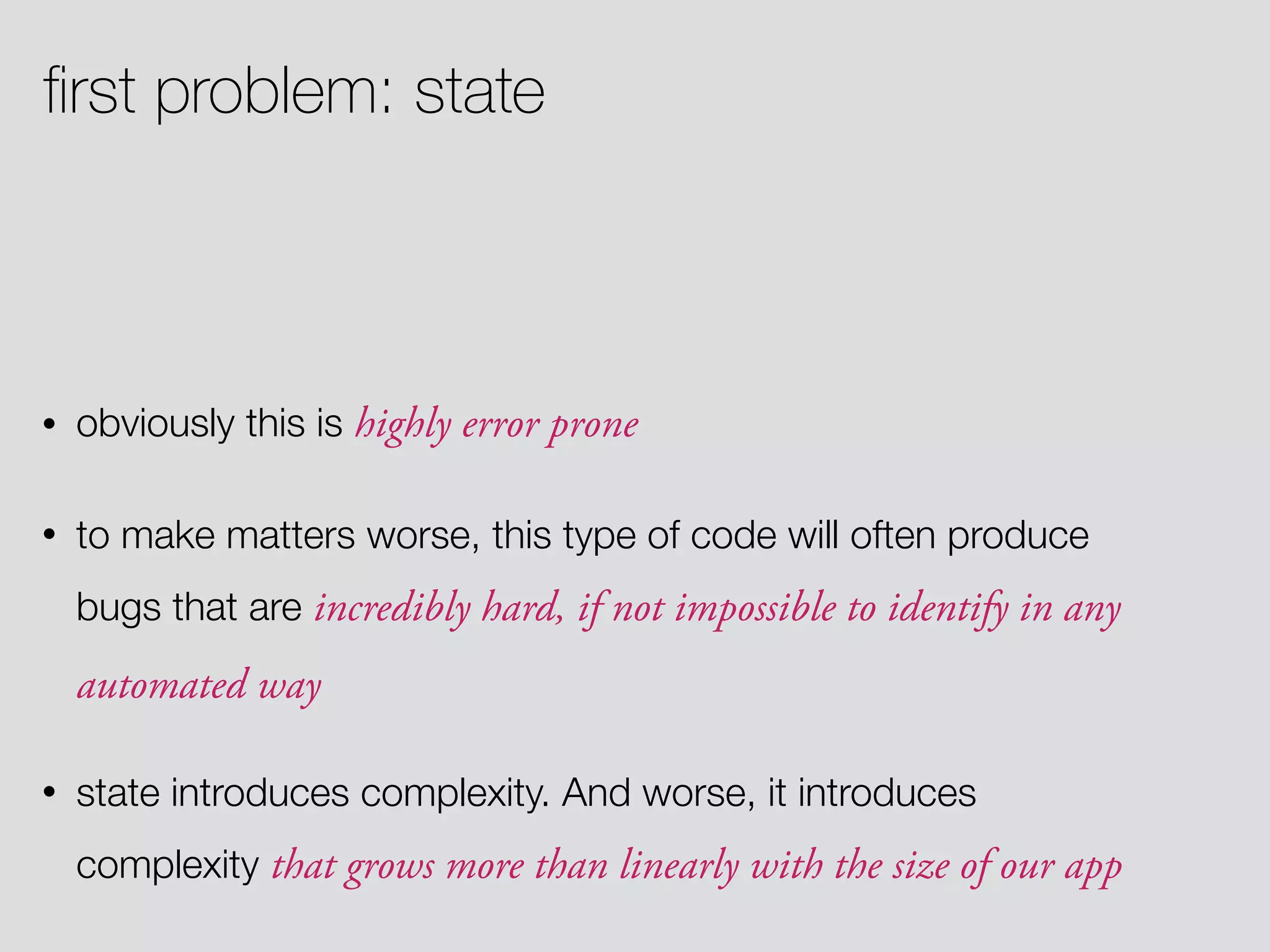
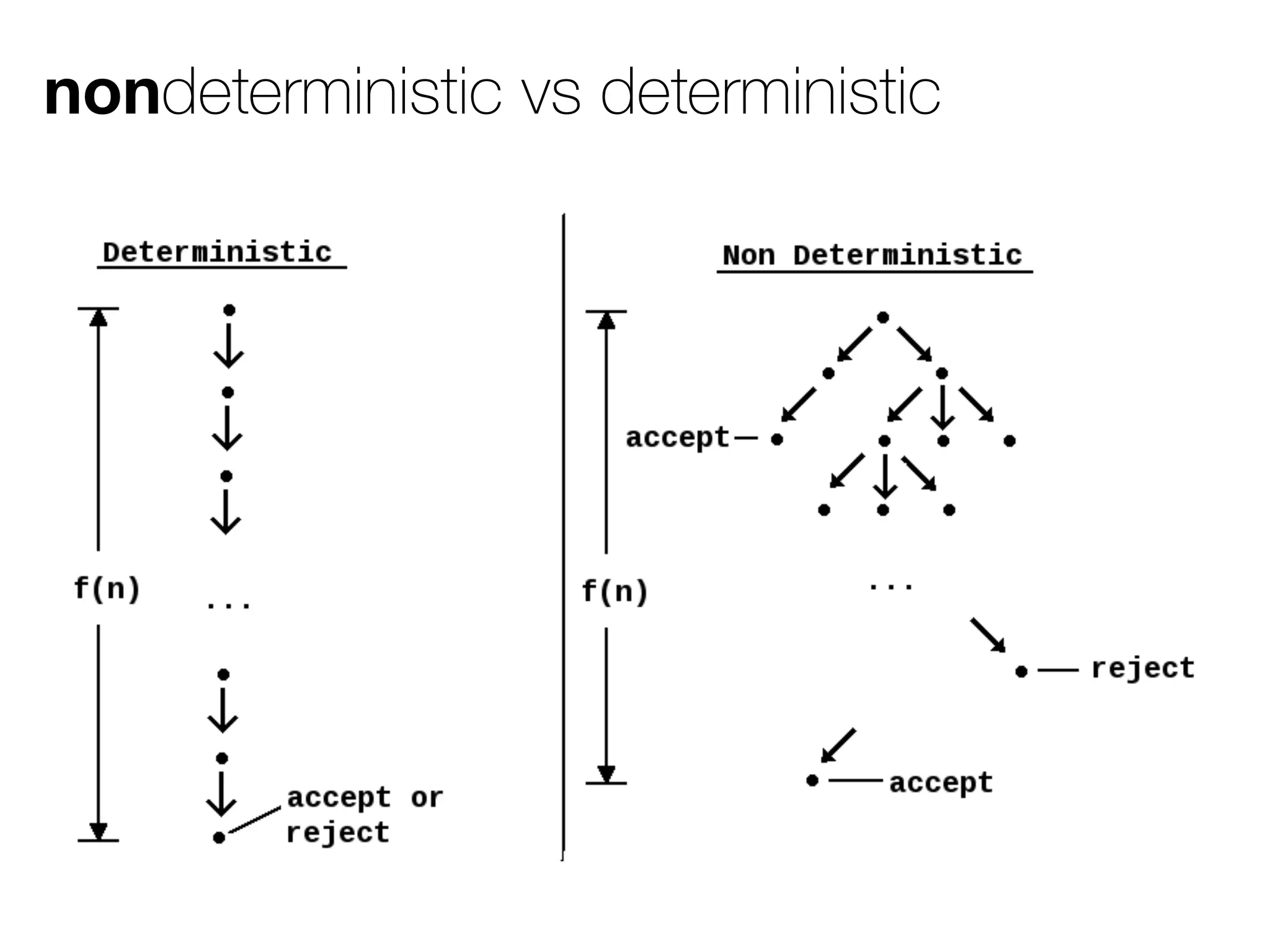
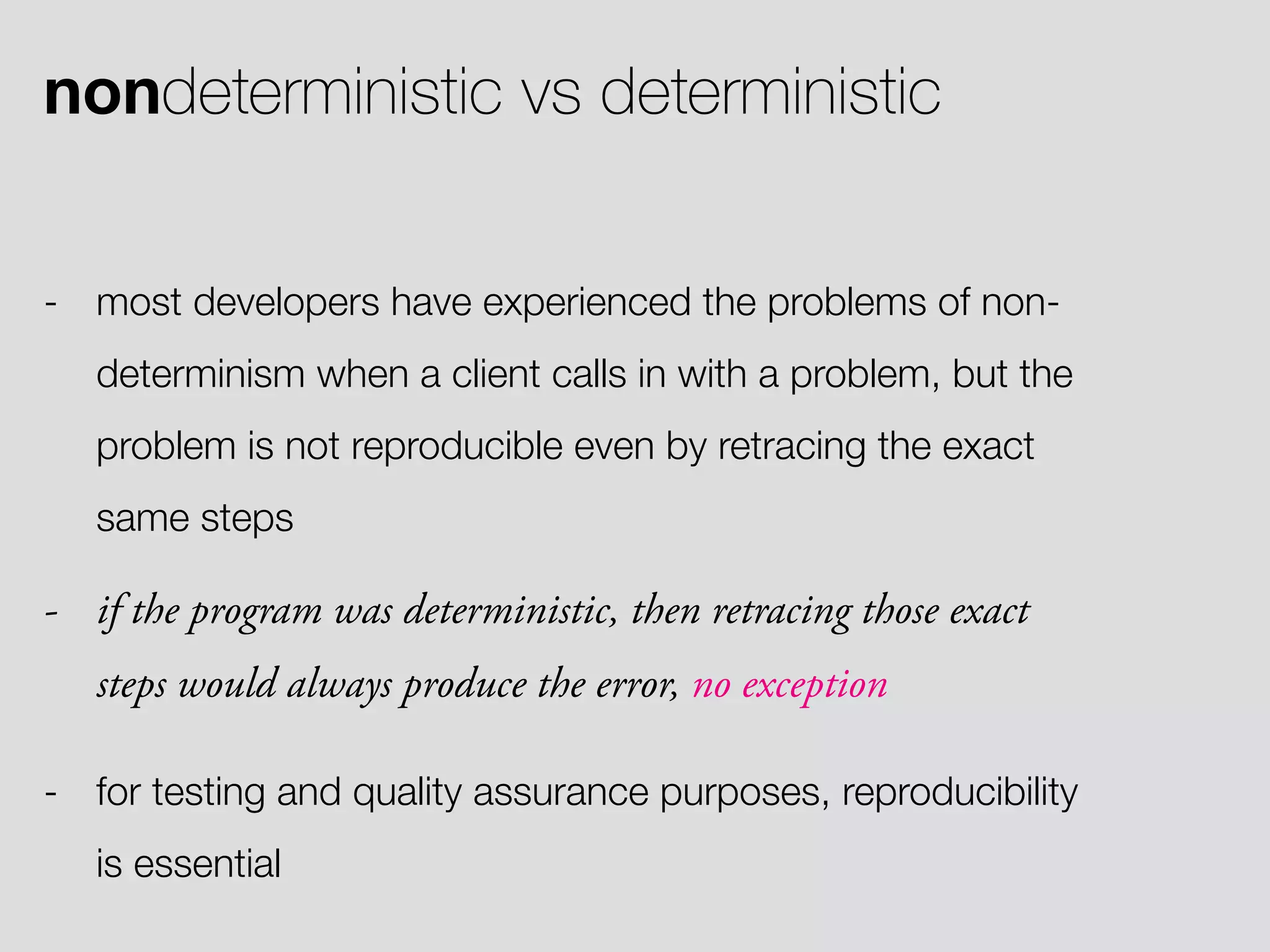
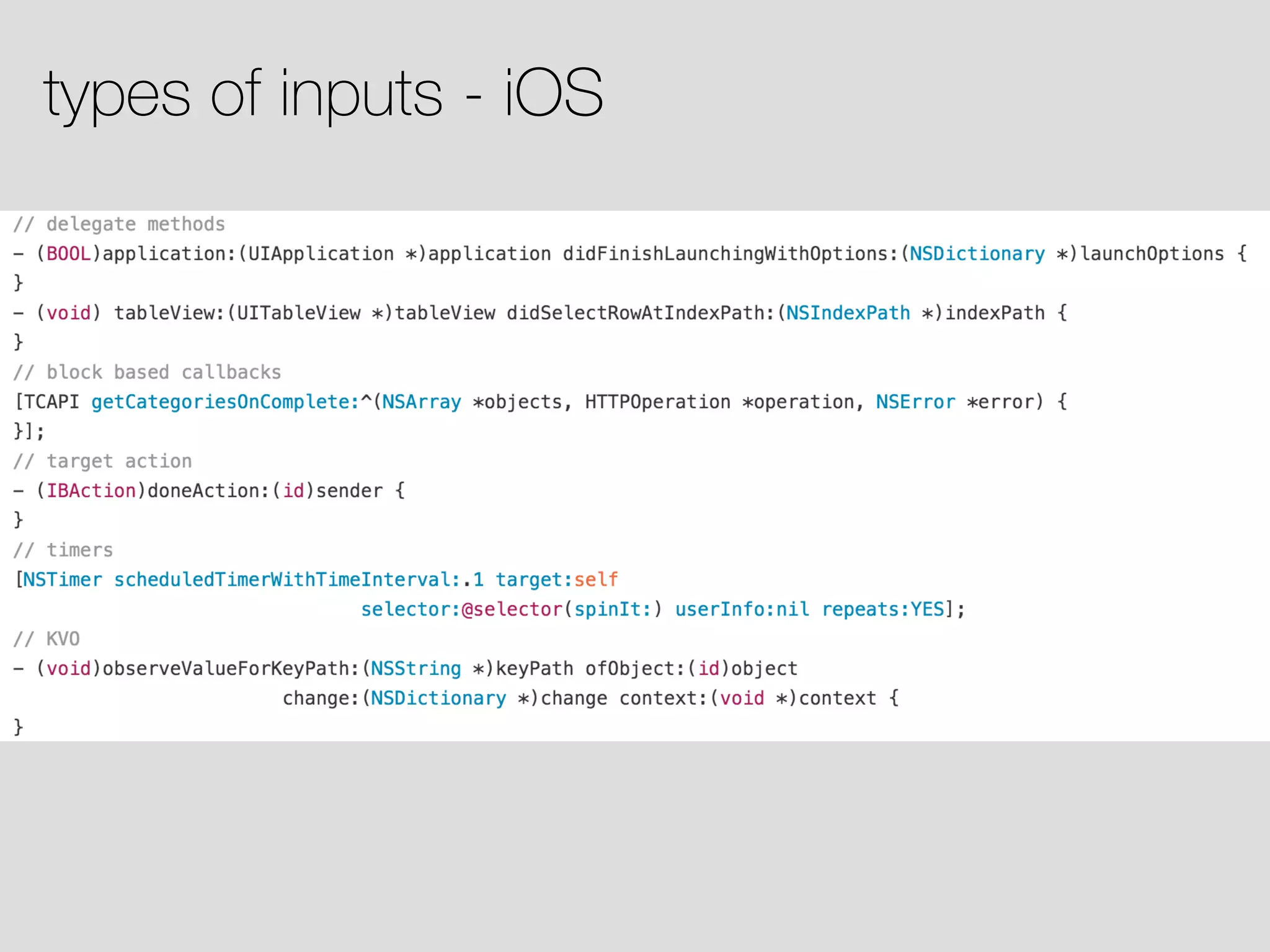
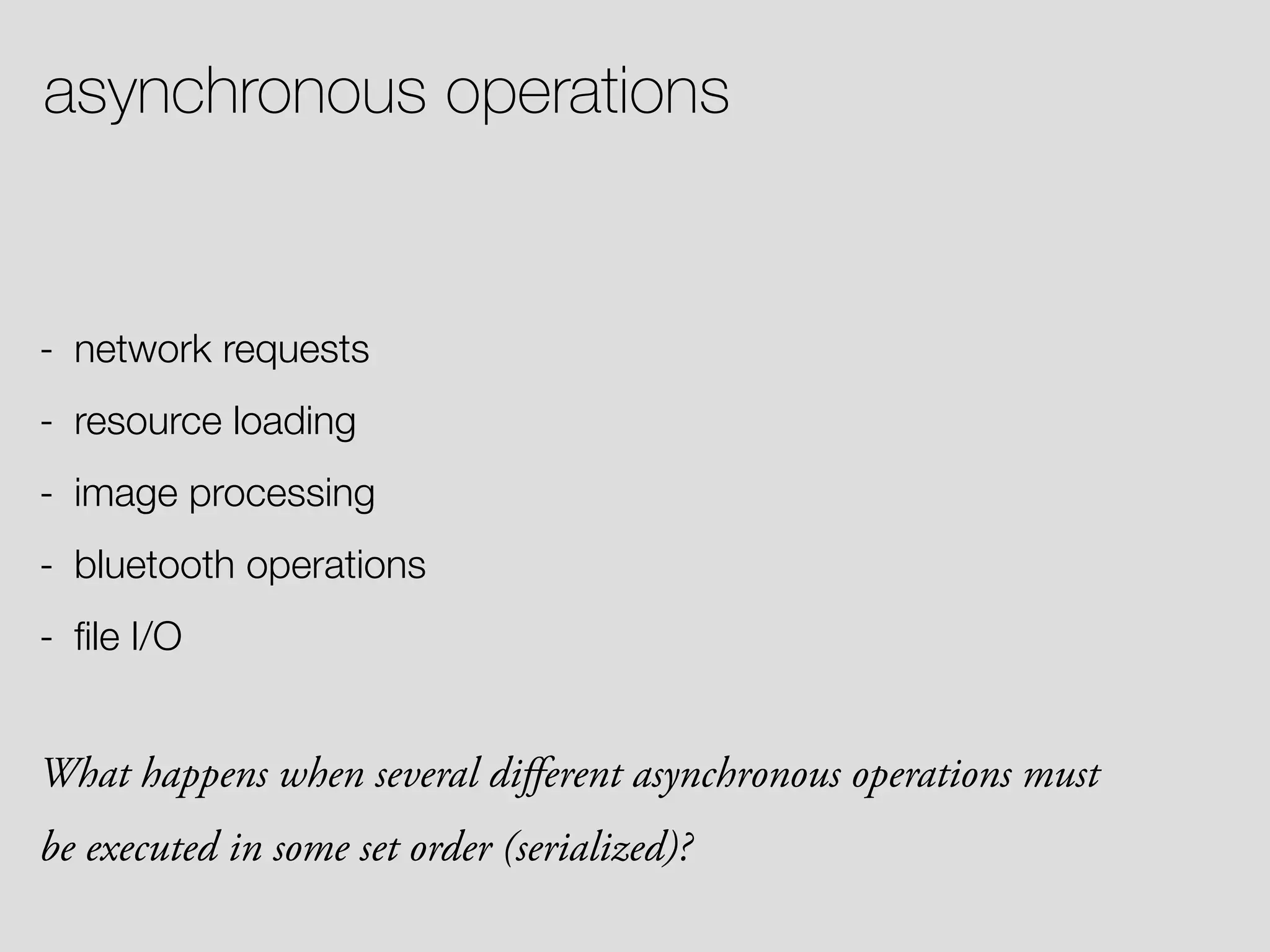
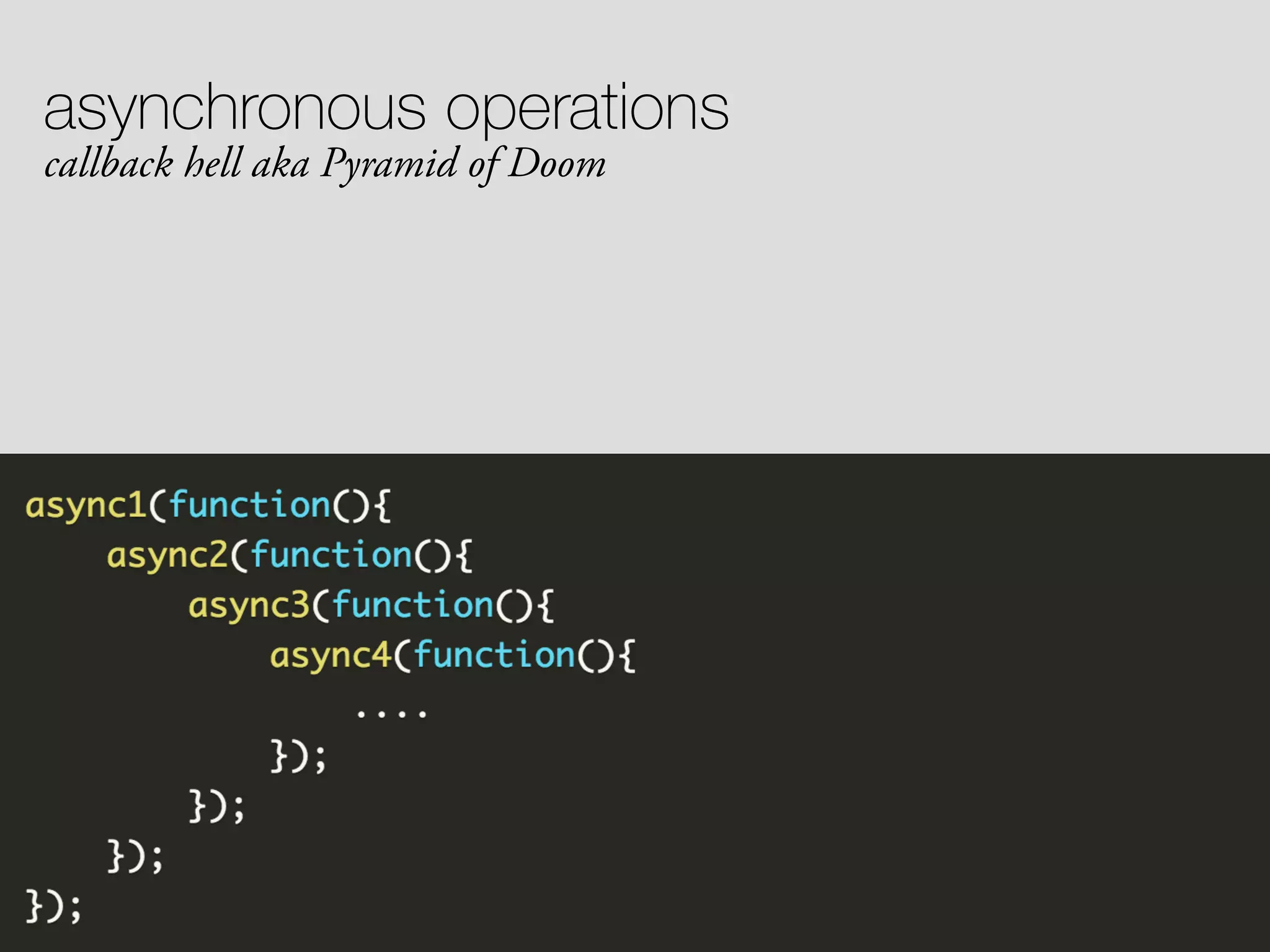
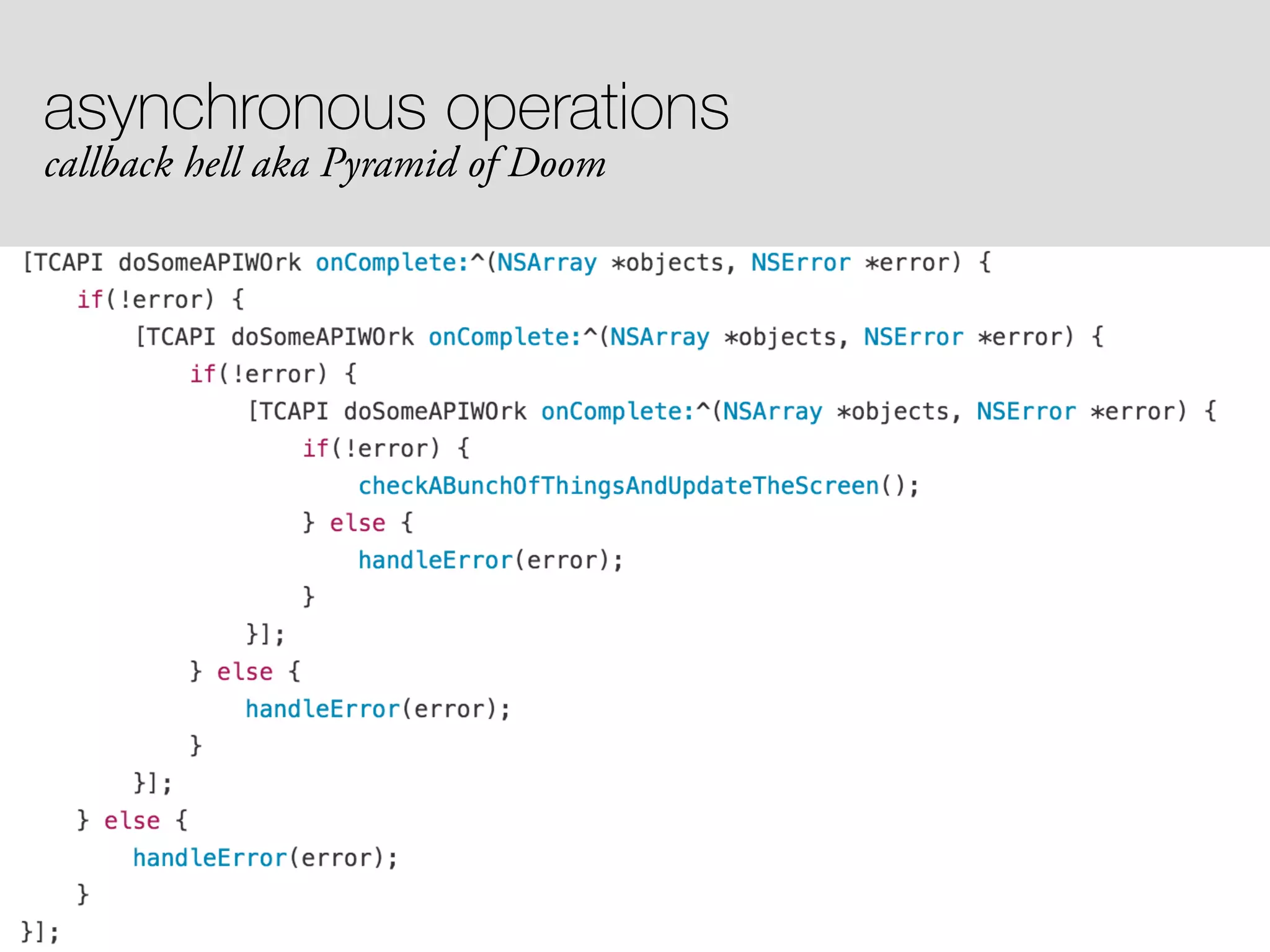
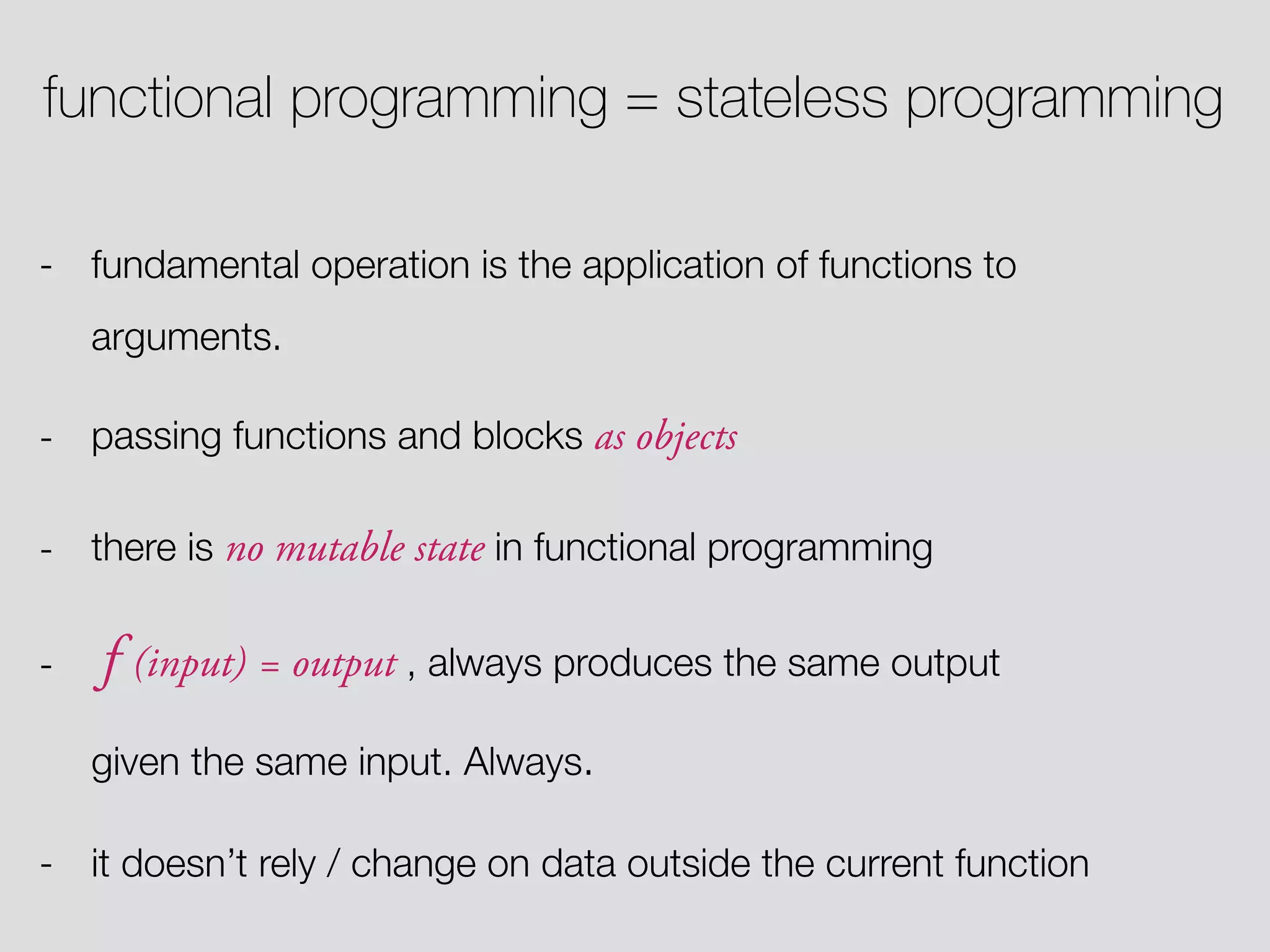
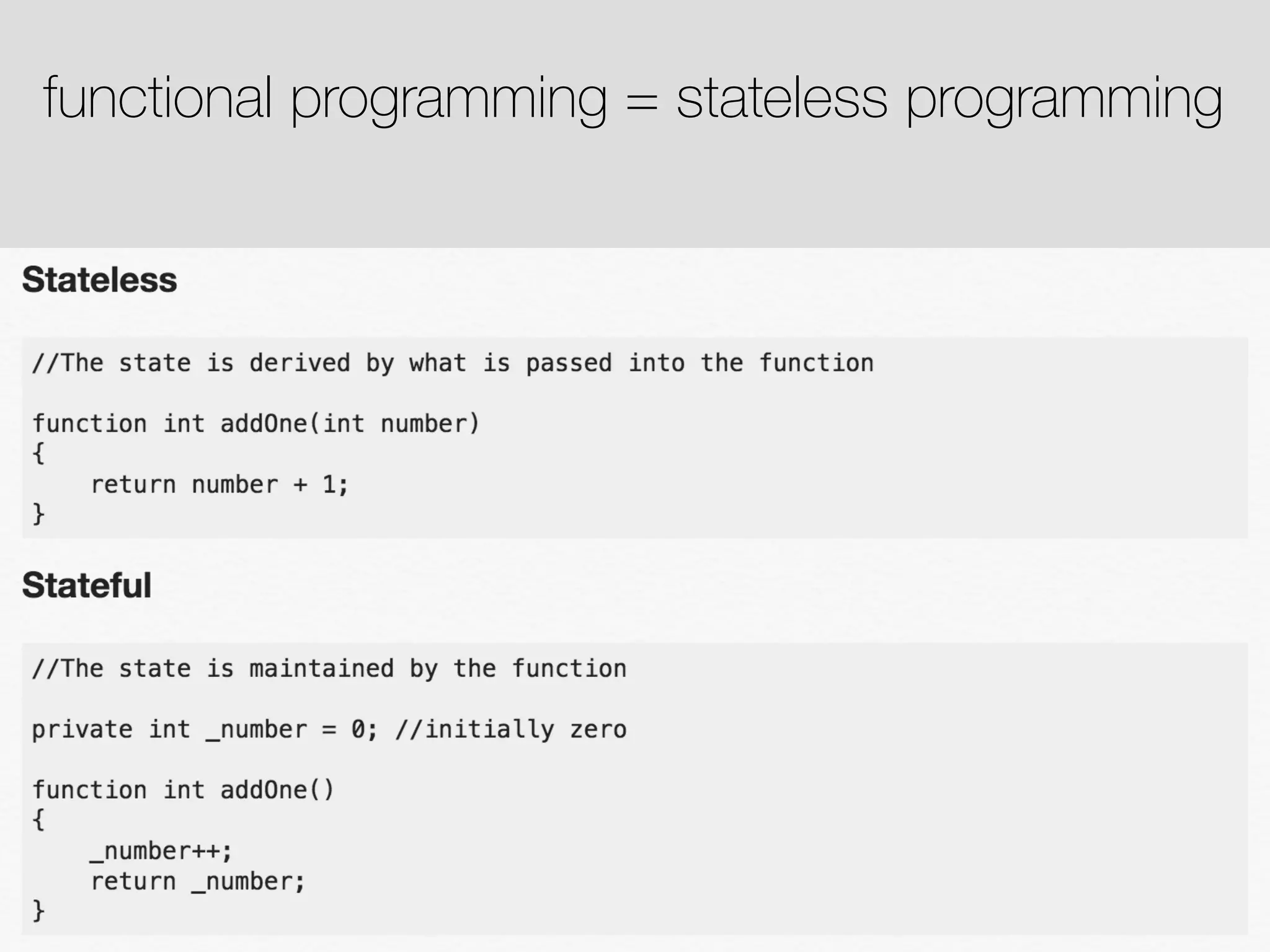
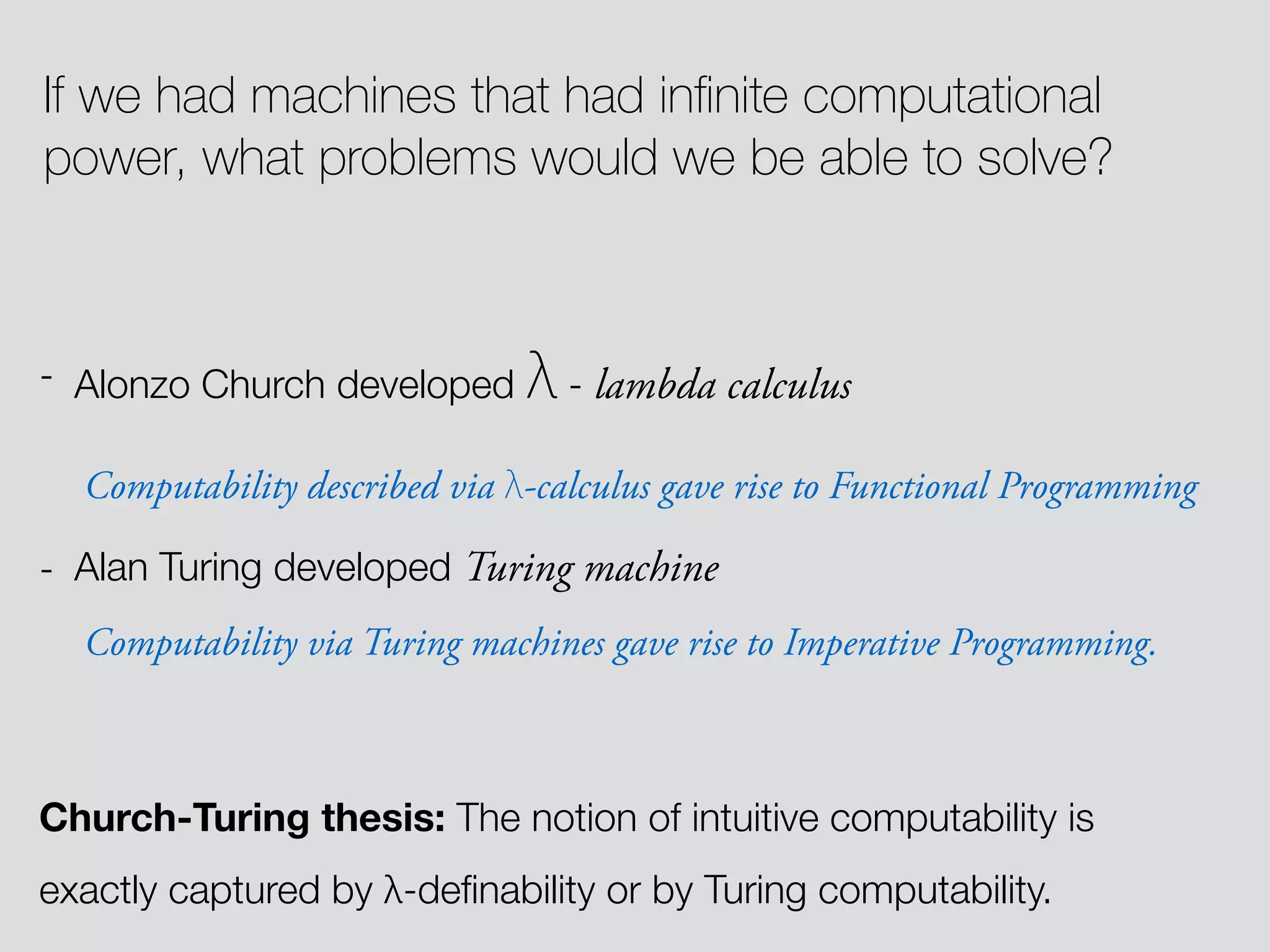
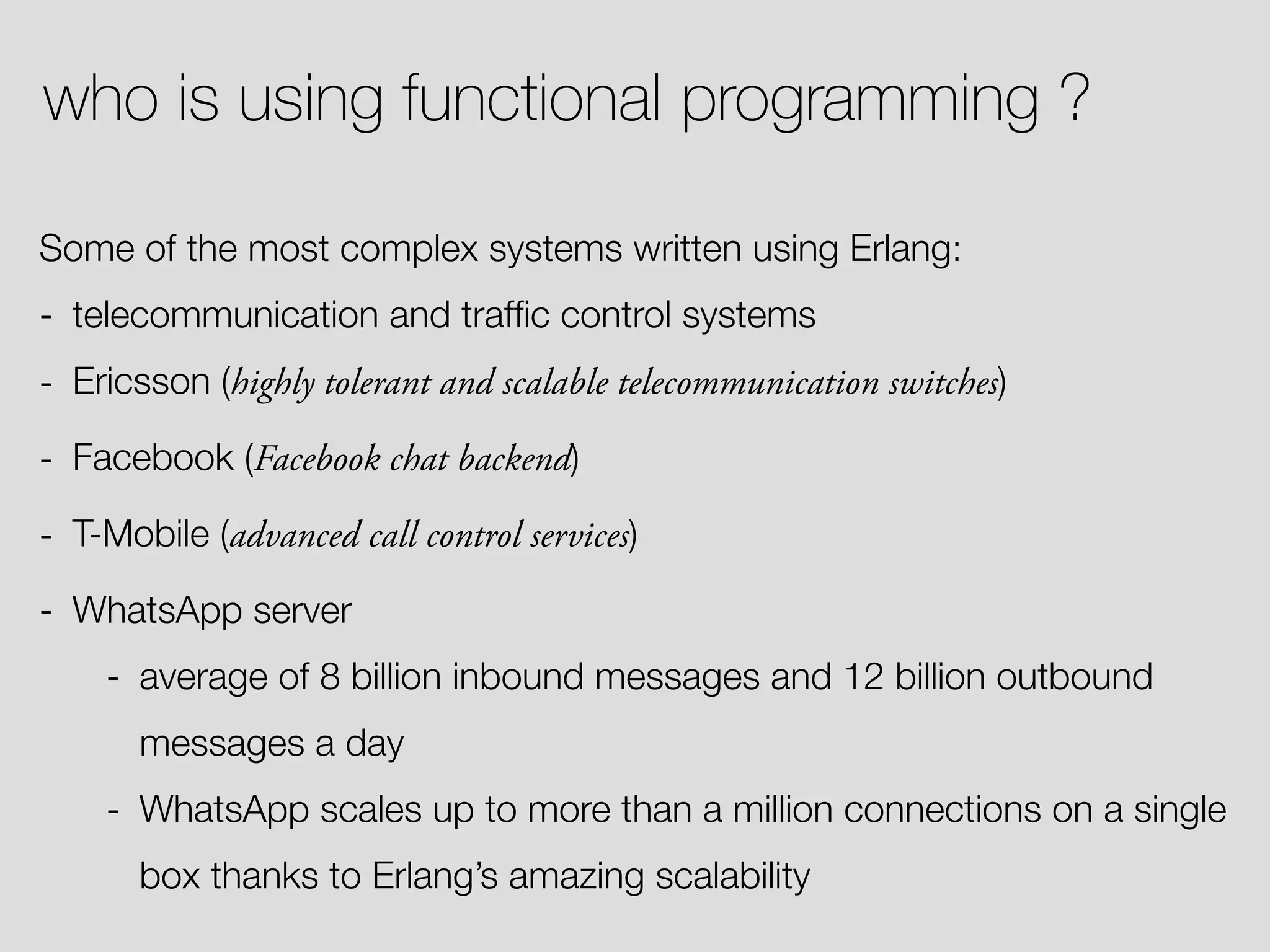
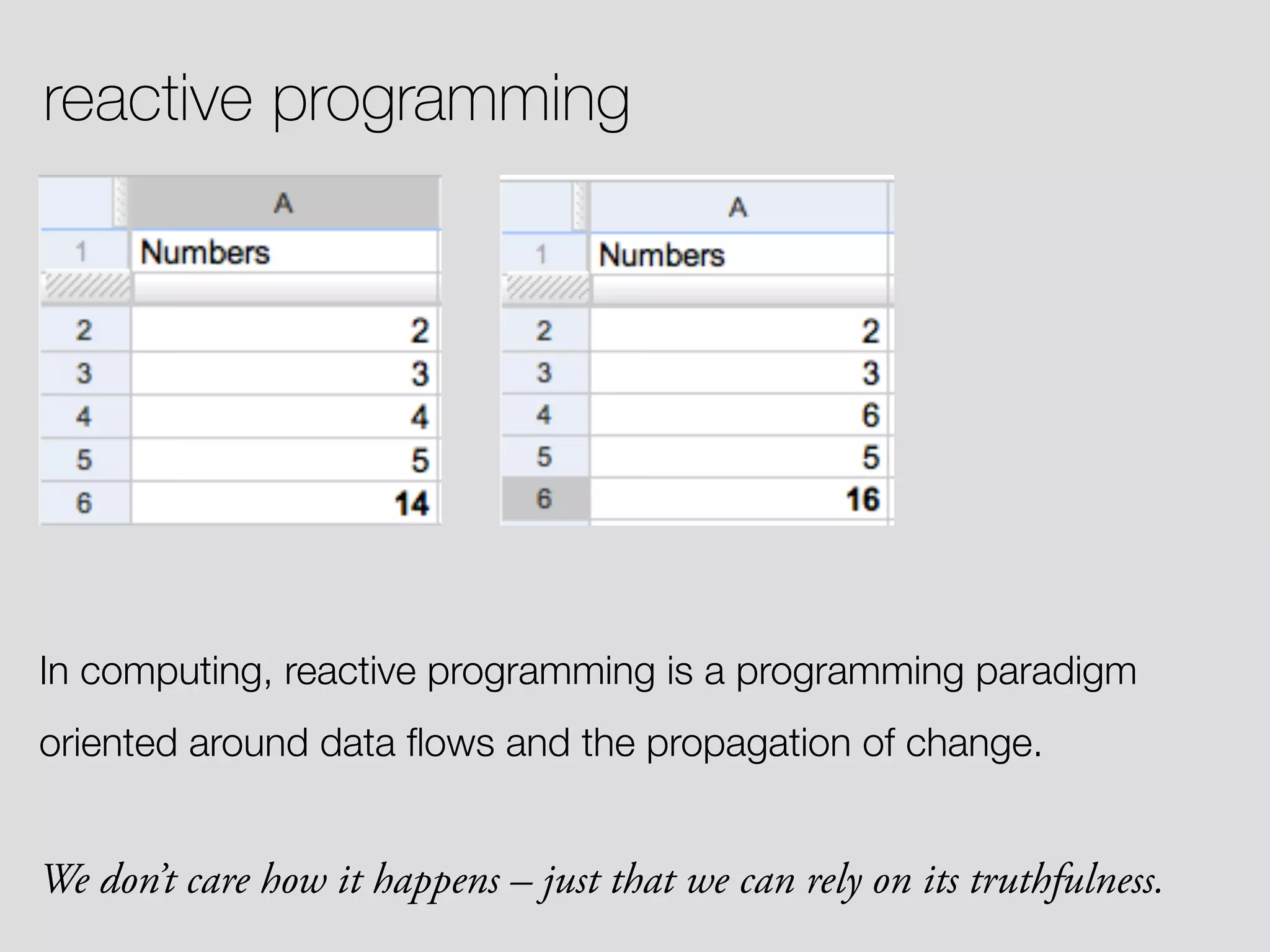
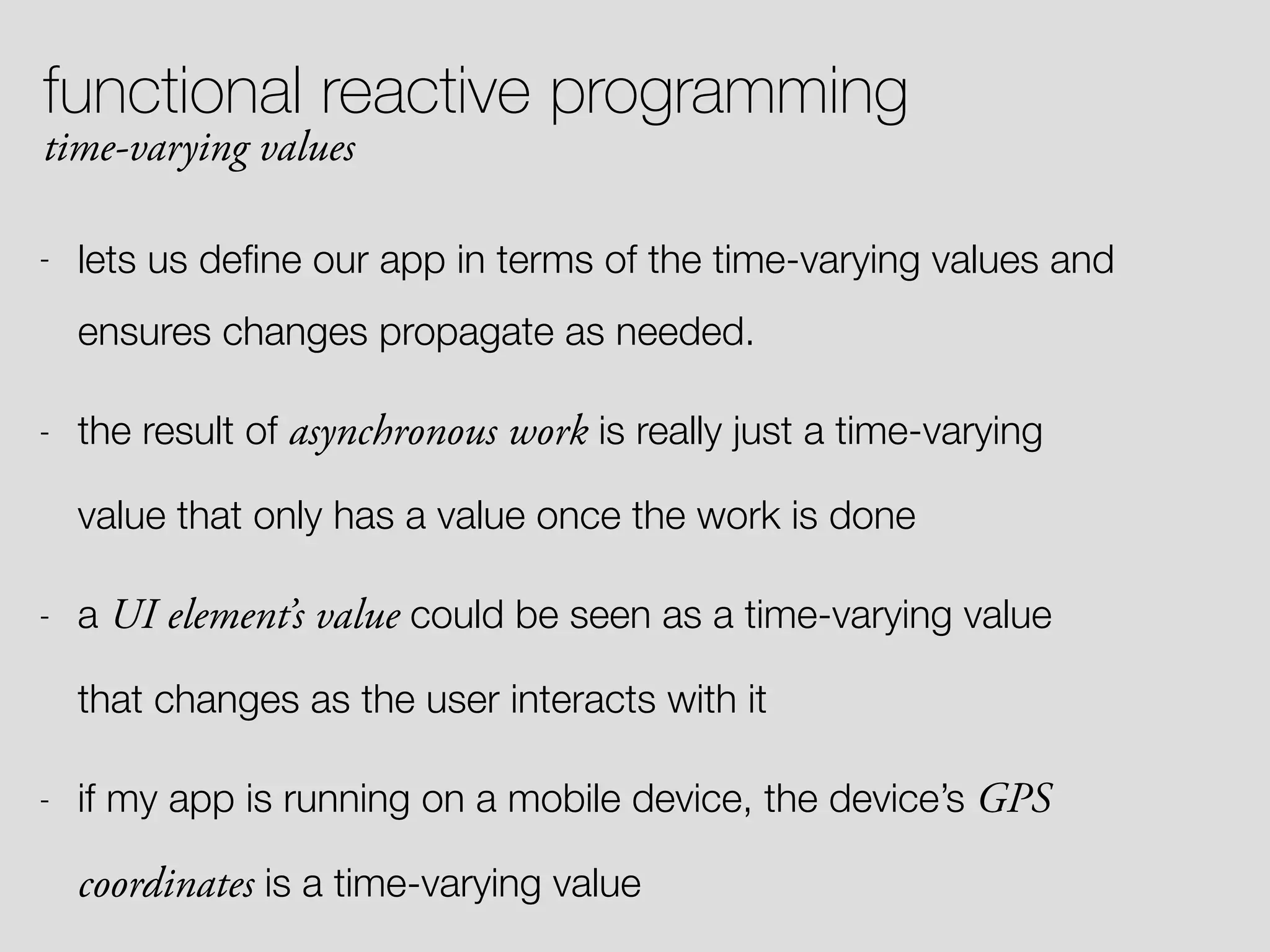
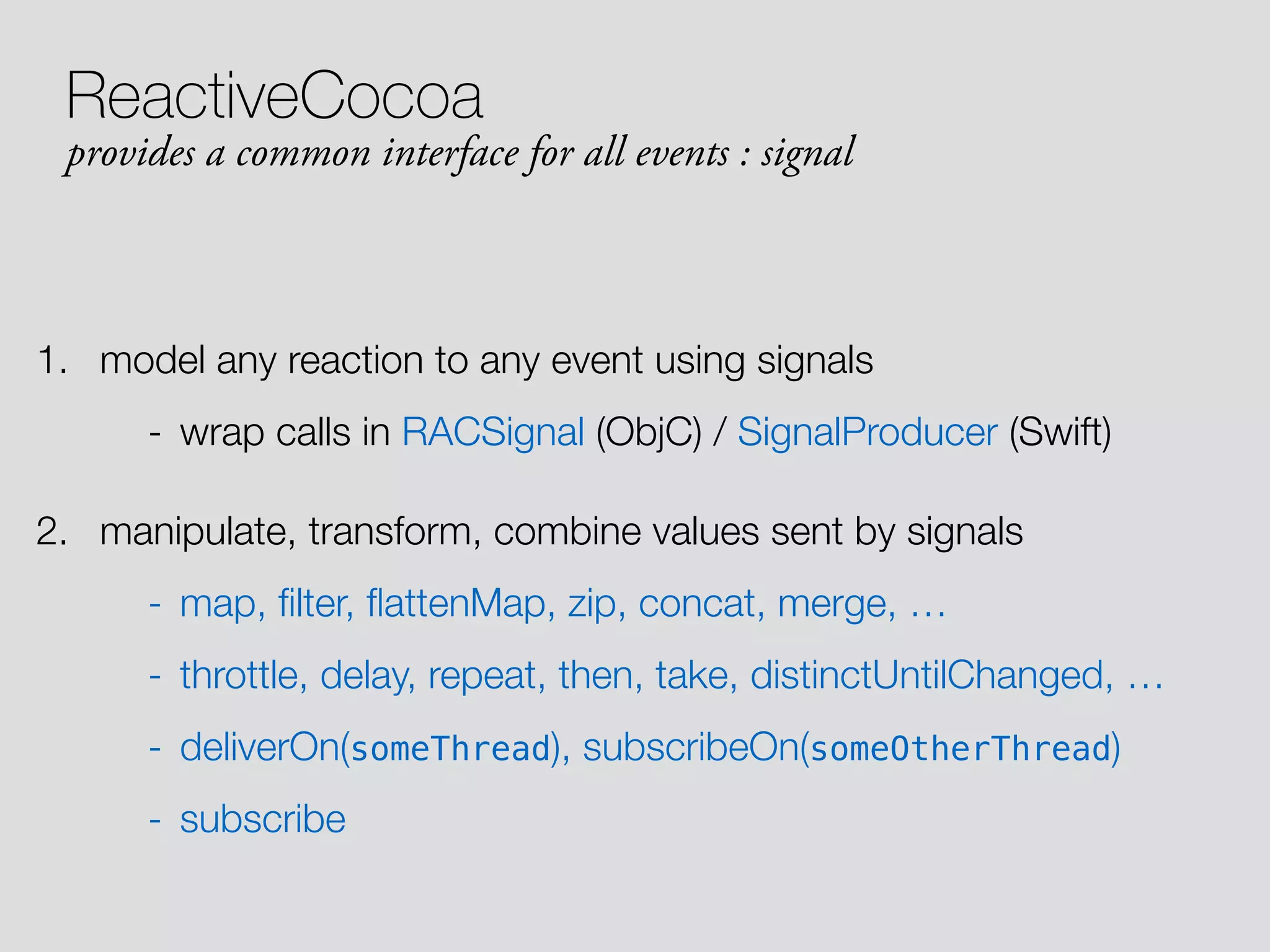
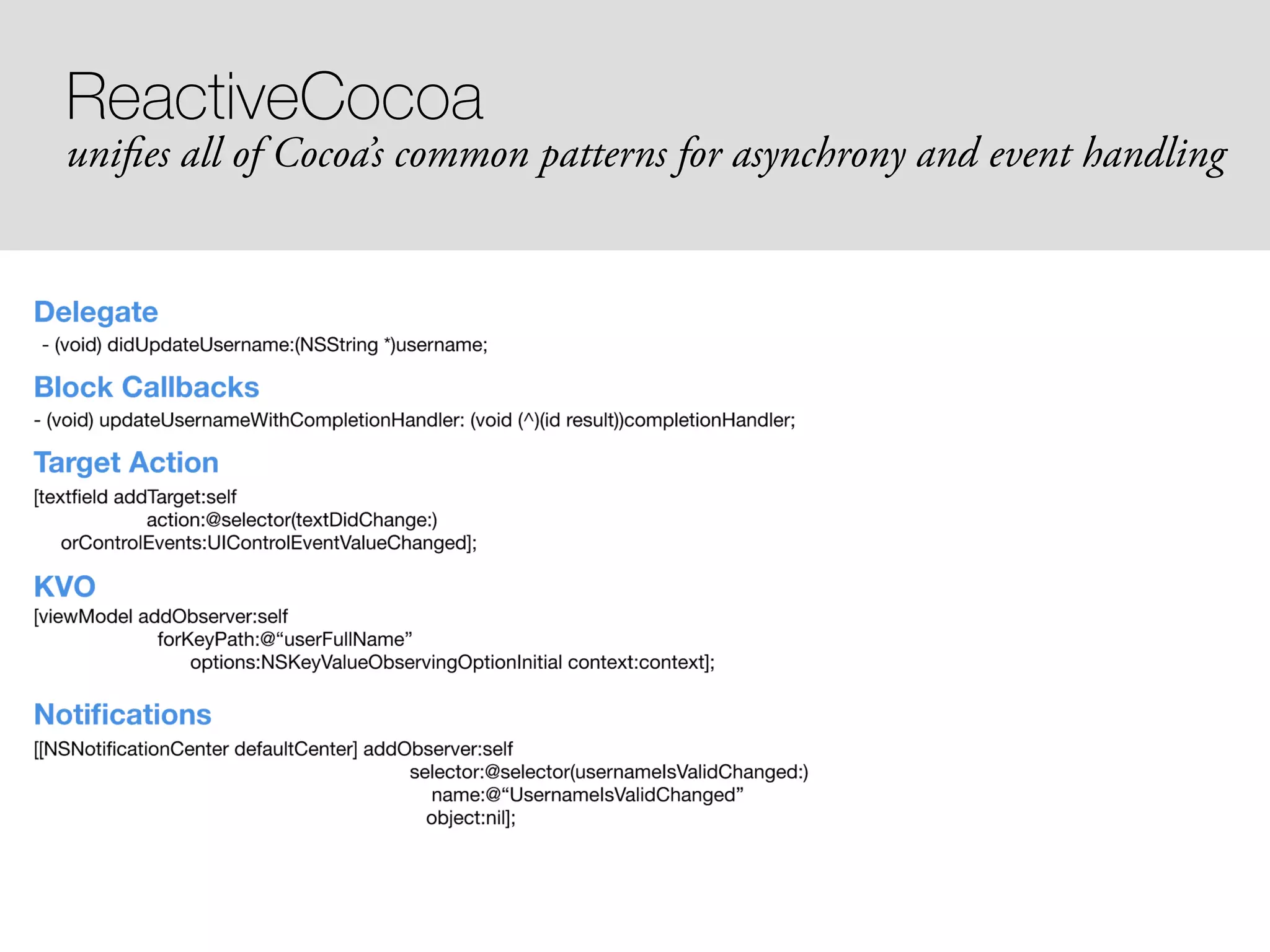
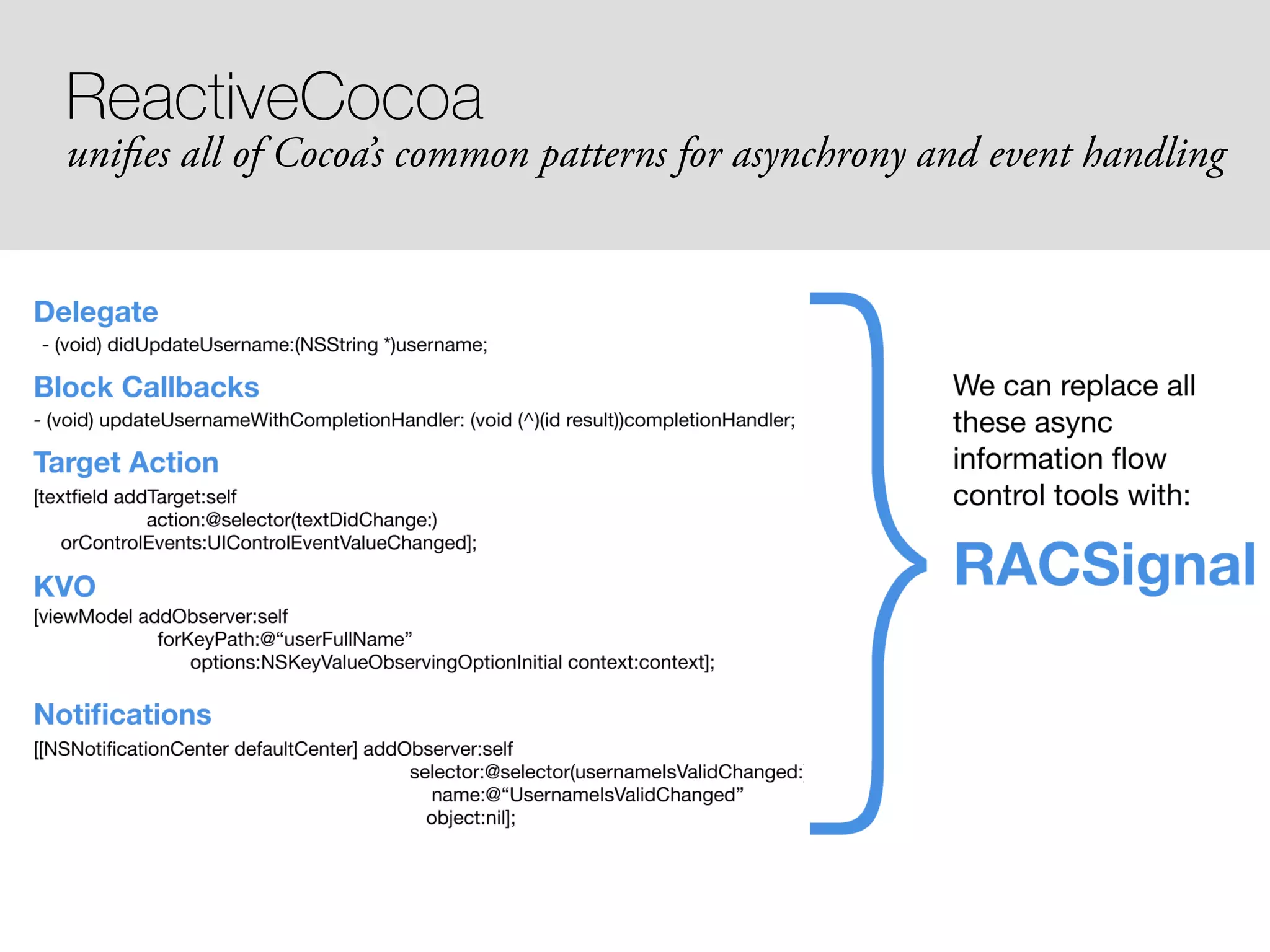
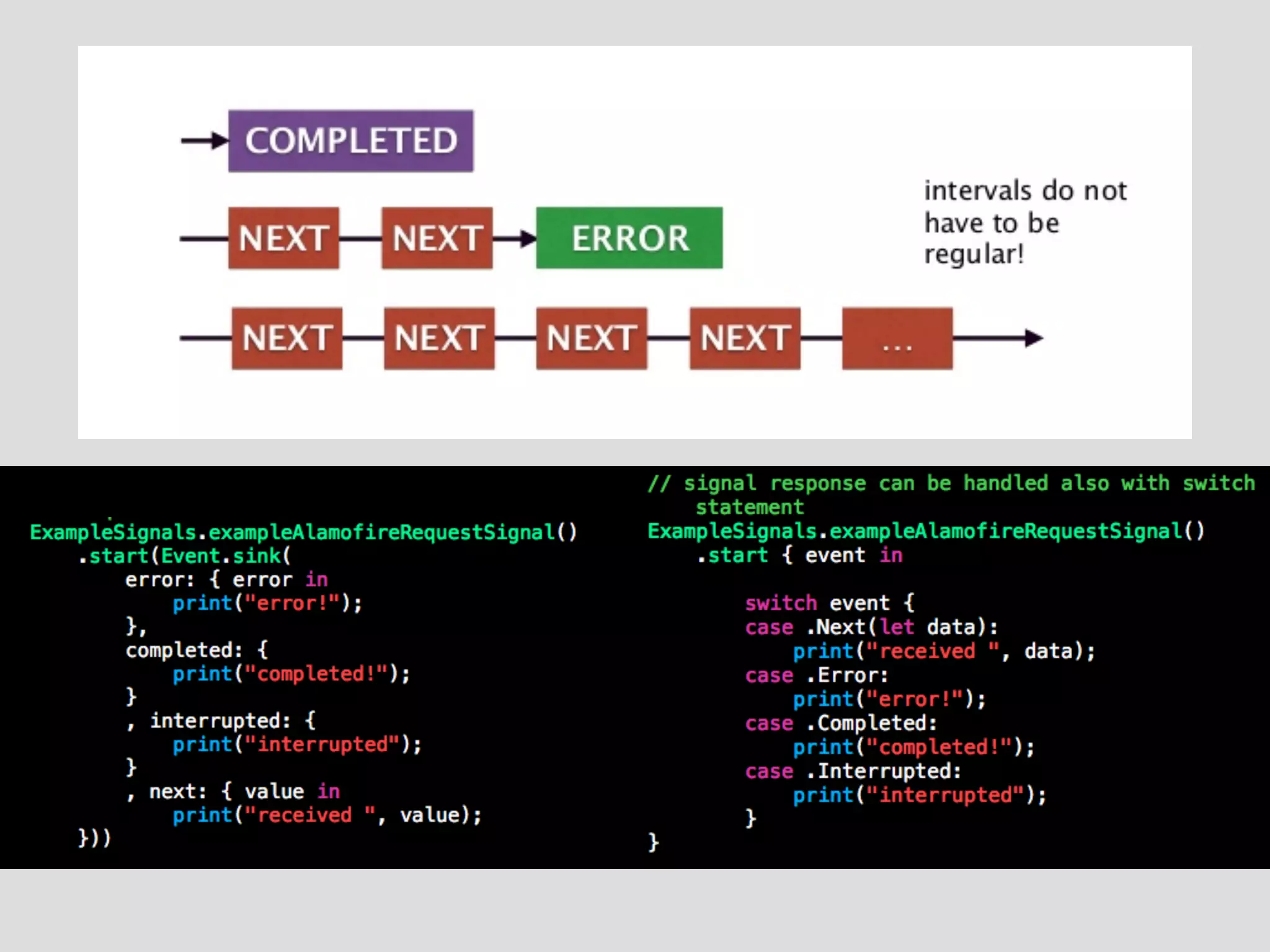

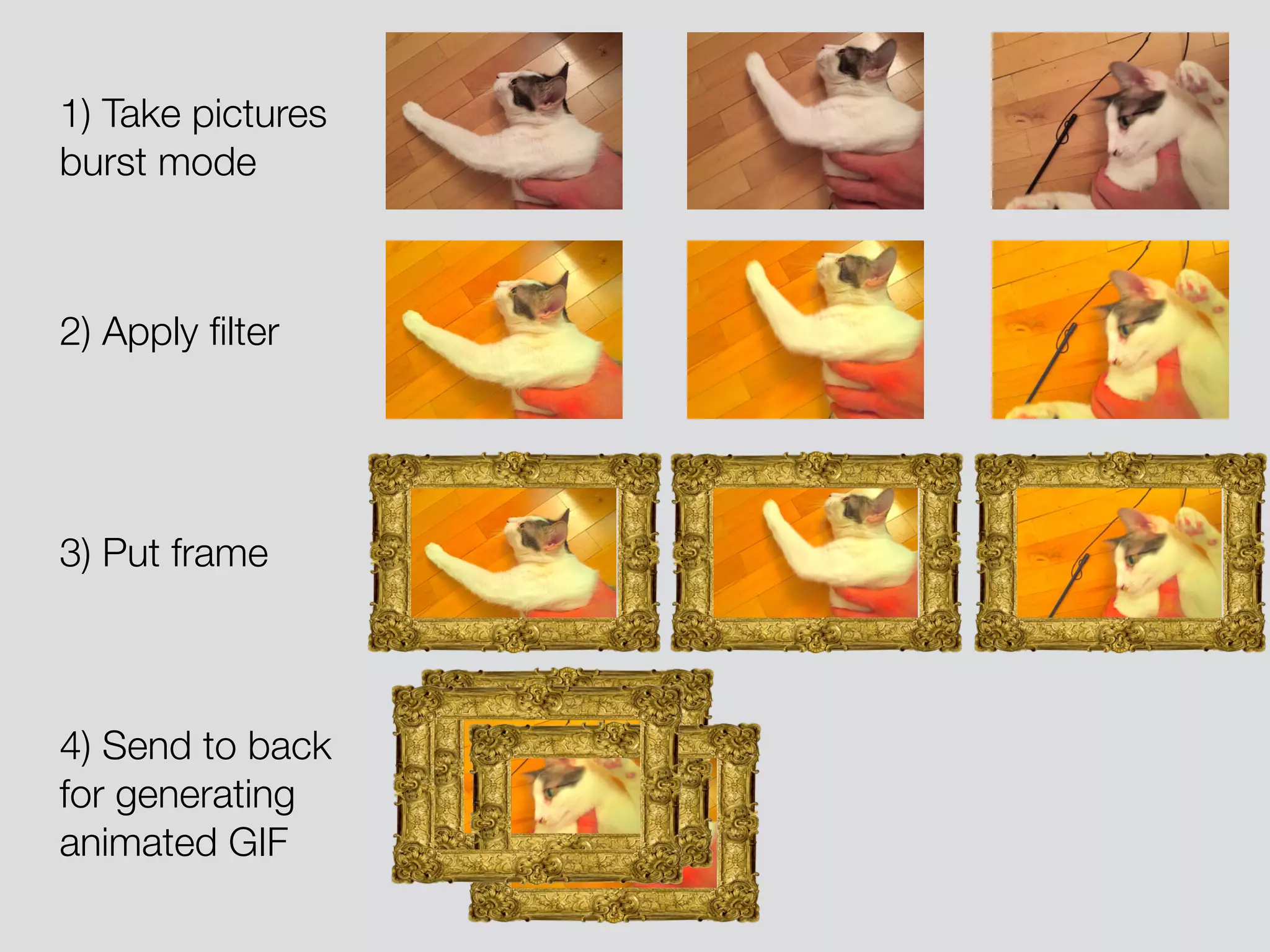
![- (RACSignal *) generateCats { return [RACSignal createSignal:^RACDisposable *(id<RACSubscriber> subscriber) { // my long async call ——————————————————————————- [[MyCameraManager sharedInstance] takePicturesBurstMode:^(UIImage *image, NSError *error) { if (error) { [subscriber sendError:error]; } else { [subscriber sendNext:image]; [subscriber sendCompleted]; } }]; // —————————————————————————————————————————————— return nil; }]; } 1) take pictures](https://image.slidesharecdn.com/rac-151017091351-lva1-app6891/75/ReactiveCocoa-Functional-Reactive-Programming-concepts-in-iOS-25-2048.jpg)
![- (UIImage *) applyFilter(UIImage *) { return ; } [[signalFactory generateCats] map:^id(UIImage *cat) { return applyFilter(cat); }]; 2) apply filter](https://image.slidesharecdn.com/rac-151017091351-lva1-app6891/75/ReactiveCocoa-Functional-Reactive-Programming-concepts-in-iOS-26-2048.jpg)
![- (UIImage *) putFrame(UIImage *)image { return image ; } [[[signalFactory generateCats] map:^id(UIImage *cat) { return applyFilter(cat); }] map:^id(UIImage *cat) { return putFrame(cat); }]; 3) put frame](https://image.slidesharecdn.com/rac-151017091351-lva1-app6891/75/ReactiveCocoa-Functional-Reactive-Programming-concepts-in-iOS-27-2048.jpg)
![[[[[[signalFactory generateCats] map:^id(UIImage *cat) { return applyFilter(cat); }] map:^id(UIImage *cat) { return putFrame(cat); }] collect] // combine all next events into one NSArray flattenMap:^RACStream *(NSArray *allCats) { // [signalFactory sendAsyncToBackend:allCats] is a RACSignal return [signalFactory sendAsyncToBackend:allCats]; }]; // this will still be a RACSignal 4) Send to back for generating animated GIF](https://image.slidesharecdn.com/rac-151017091351-lva1-app6891/75/ReactiveCocoa-Functional-Reactive-Programming-concepts-in-iOS-28-2048.jpg)
![[[[[[[signalFactory generateCats] // take pictures map:^id(UIImage *cat) { return applyFilter(cat); }] // apply filter map:^id(UIImage *cat) { return putFrame(cat); }]] // put frame collect] // get all the processed images flattenMap:^RACStream *(NSArray *allCats) { return [signalFactory sendAsyncToBackend:allCats]; }] // send async call and wait for the result // signal is started when someone subscribes subscribeNext:^(UIImage *animatedGIF) { // success!, display GIF } error:^(NSError *error) { // error }]; 5) see the result](https://image.slidesharecdn.com/rac-151017091351-lva1-app6891/75/ReactiveCocoa-Functional-Reactive-Programming-concepts-in-iOS-29-2048.jpg)
